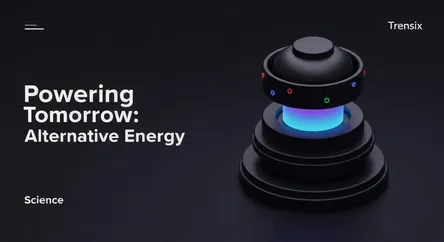Science
Powering Tomorrow: Alternative Energy

An overview of alternative energy sources like solar and wind, and why they are essential for combating climate change and building a sustainable future.
What is it?
Alternative energy refers to energy sources other than fossil fuels like coal, oil, and natural gas. These alternatives, often called renewable energy, are derived from natural processes that are constantly replenished. Key examples include solar power harnessed from the sun, wind power from the movement of air, geothermal energy from the Earth's internal heat, and hydropower from flowing water. Unlike finite fossil fuels, these sources produce minimal to no greenhouse gas emissions, making them environmentally friendly.
Why is it trending?
The global trend towards alternative energy is driven by the urgent need to address climate change. As concerns over carbon emissions and global warming intensify, governments and industries are shifting focus to cleaner solutions. This transition is accelerated by significant technological advancements that have made solar panels and wind turbines more efficient and affordable. Favorable government policies, subsidies, and international climate agreements are also playing a crucial role in promoting the widespread adoption of sustainable power.
How does it affect people?
The shift to alternative energy positively impacts people in several ways. It fosters a "green economy" by creating new jobs in manufacturing, installation, and maintenance. For homeowners, adopting technologies like solar panels can lead to lower electricity bills and even energy independence. On a community level, cleaner energy sources reduce air pollution, which improves public health by decreasing rates of respiratory illnesses. It also enhances national energy security by reducing dependence on foreign fossil fuels.